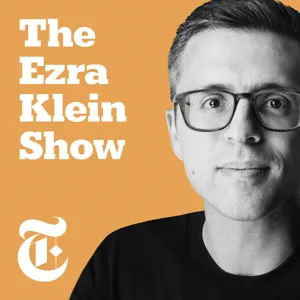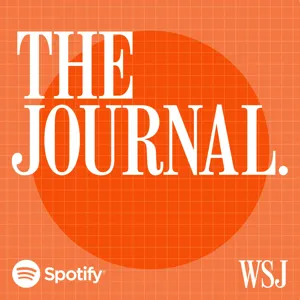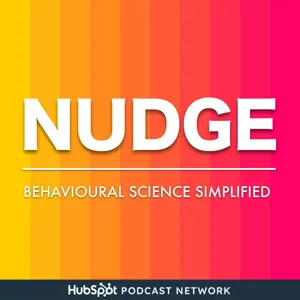Podcast Summary
Oregon decriminalizes most street drugs, but outcomes are mixed: Oregon's drug decriminalization marks a shift in policy, but concerns about addiction, commercialization, and public safety persist. Experts suggest differentiating between drugs based on addictive properties and learning from legal drug regulation to inform policy on illegal ones.
The war on drugs has been recognized as a failure, leading to a shift in drug policy reform across the US. Oregon became the first state to decriminalize most street drugs in 2020, marking a significant change. However, the implementation and outcomes of these new policies have been mixed, with concerns about addiction, commercialization, and public safety. Keith Humphreys, a Stanford University professor specializing in addiction and drug policy, suggests that we should differentiate between drugs based on their addictive properties and consider learning from the regulation of legal drugs to inform policy on illegal ones. The future of drug policy remains uncertain, but the consensus is that the previous carceral and racist approach is no longer an acceptable option.
Drug policy reforms introduce new challenges: Drug policy reforms, such as Measure 110 in Oregon, can reduce drug-related arrests but also introduce challenges like treatment access, effective resource management, intangible impacts, and community concerns.
The legalization of drugs, specifically alcohol, comes with its own set of challenges and costs. The implementation of drug policy reforms, such as Measure 110 in Oregon, while successful in reducing drug-related arrests, can face challenges in areas like treatment access and availability, as well as effective management of new funds and resources. The intangible impacts, such as visible drug use and neighborhood disorder, can also lead to significant community concerns and upset. While some argue that the focus on arrest reduction is a success, others emphasize the need for tangible evidence of people getting better and entering recovery. The housing market issues in areas like Oregon, San Francisco, and Washington state further complicate the situation. In essence, while drug policy reforms may offer solutions to certain problems, they also introduce new challenges that require careful planning, effective implementation, and ongoing evaluation.
The complex link between homelessness, addiction, and drug policy: Effective policies should address both increasing access to housing and reducing the harm caused by addiction, recognizing the interconnectedness and complexity of these issues.
The relationship between homelessness, addiction, and drug policy is complex and interconnected. The argument that drug policy is to blame for the homeless crisis or that homelessness causes addiction is oversimplified. People can lose their homes due to addiction, and they can also develop addictions while homeless. Addiction is different from other conditions like chronic pain or depression because it provides immediate rewards, making it difficult for people to quit. Most people who seek treatment for addiction are pressured to do so from outside sources, such as family, employers, or legal consequences. The theory that removing all pressure and legal consequences will lead people to spontaneously seek treatment is unrealistic. From another perspective, overly conservative drug policies can also be problematic, as people may end up using unknown and potentially dangerous substances due to a lack of trusted sources. Ultimately, effective policies should address both increasing access to housing and reducing the harm caused by addiction.
Decriminalization and Opioids: A Complex Solution: Decriminalization and providing access to opioids without proper regulation can lead to unintended consequences, such as increased addiction and overdoses, as seen in Oregon's Measure 110. Portugal's success with decriminalization is not directly transferable due to cultural and policy differences.
While decriminalizing and providing access to consistently labeled and quality-controlled opioids may seem like a solution to prevent overdoses and addiction, history has shown that it can lead to millions becoming addicted and tens of thousands dying. The case of Measure 110 in Oregon serves as an example, where the implementation of this approach led to a surge in overdoses and a shift in public sentiment, resulting in the repeal of the measure and the restoration of criminal penalties, supplemented with increased funding for treatment. Portugal, which is often cited as a successful model, differs not only in policy but also in culture, with universal healthcare and a family-oriented society, which contributes to the effectiveness of their decriminalization approach.
Balancing Individual Freedom and Communal Support: Recognizing the importance of both individual freedom and communal support in addressing substance use issues, including the need for harm reduction and treatment.
While San Francisco and Lisbon represent vastly different cultural approaches – with San Francisco championing individual freedom and Lisbon embracing communitarian constraints – both cities have unique merits. The speaker acknowledges the importance of individual freedom in San Francisco, which has contributed to its status as a haven for diverse communities and innovative ideas. However, they also argue that addiction should not be overlooked or romanticized as an expression of individual freedom. Instead, it's crucial to recognize the inconsistency and intervene with support, such as mandating treatment or administering life-saving medication during an overdose. The speaker criticizes the current drug policy rhetoric that primarily focuses on overdose prevention without addressing addiction itself. By acknowledging the complexity of the issue and recognizing the need for both harm reduction and treatment, we can create a more comprehensive approach to addressing substance use issues. The speaker's perspective highlights the importance of balancing individual freedom with communal support and recognizing the value of both approaches in creating thriving, diverse communities.
Cultural acceptance of drug use by elites and high-profile figures: The evolving consensus on drug use moves from 'drugs are bad' to 'drugs can be good', and the harmful effects of punitive drug policies have led to reforms like Oregon's Measure 110.
The cultural acceptance of certain types of drug use among elites and high-profile figures has contributed to the shifting perception and policy towards drugs, particularly psychedelics. This change in attitude, driven by influential voices and books, has made it hypocritical to maintain a punitive approach towards drug use, leading to the passing of reforms like Measure 110 in Oregon. However, it's important to remember that not everyone's experience with drugs is the same, and people with fewer resources and less support are more likely to be negatively impacted by drug use. The consensus on drug use has evolved from "drugs are bad and policing is good" to a belief that drug use can be neutral to good, depending on the drug, and that policing is harmful. The murder of George Floyd and the Black Lives Matter movement also played a significant role in the passing of Measure 110 by raising concerns about racism and policing, specifically in relation to drug enforcement.
San Francisco's Unusual Approach to Address Fentanyl Crisis: Billboards Promoting Drug Use: The pandemic led SF public health to promote fentanyl use in social settings via billboards, sparking controversy for potentially glamorizing drug use. Residents felt unfairly burdened, with tensions heightened by racial undertones and perceived government tolerance of disorder in certain neighborhoods.
During the pandemic, San Francisco's public health department adopted an unusual approach to address the fentanyl crisis by promoting the use of the drug in a social setting through billboards. This approach aimed to destigmatize fentanyl use and encourage users to be around others for safety, but it sparked controversy due to its potential to glamorize drug use. The government's perceived tolerance of disorder in certain neighborhoods, particularly the Tenderloin, fueled anger among residents, who felt they were bearing the brunt of the issue while wealthier neighborhoods remained unaffected. The racial dimension of this issue was also highlighted, with some arguing that the push for tolerance was unpopular among people of color living in low-income areas. Overall, the pandemic and the government's response to the fentanyl crisis in San Francisco exposed deep-rooted tensions and complexities in the city's drug policy debates.
San Francisco's Tenderloin Neighborhood: Unique Drug Market Challenges: The high concentration of open-air drug markets in the Tenderloin neighborhood disproportionately affects children and low-income families, with concerns over unequal protection under the law and the emergence of potent synthetic drugs like fentanyl complicating addiction recovery efforts.
The Tenderloin neighborhood in San Francisco faces unique challenges due to the high concentration of open-air drug markets, which disproportionately affect children and low-income families. The lawsuit argued that these markets are tolerated in poorer areas while being prohibited in wealthier ones, leading to concerns about unequal protection under the law. The emergence of potent synthetic drugs like fentanyl has complicated drug policy assumptions, making addiction recovery more challenging due to the drugs' short cycle of action and high usage rates. Despite being optimistic about addiction recovery, the current state of addiction treatment may not be sufficient to help individuals consumed by these powerful drugs. The situation is particularly concerning for the United States and Canada, as Europe is just starting to grapple with the impact of these drugs. My colleague likens the situation to an antibiotic-resistant infection, making it crucial to reassess and improve our current addiction treatment approaches.
Current addiction treatment approaches and their success rates: Despite dedicated resources, only about half of those seeking addiction treatment show significant improvement, while a quarter make some progress, and the rest show little to no progress. Genetics and individual traits contribute to these outcomes.
While significant resources have been dedicated to finding cures and effective treatments for addiction, the current frontline approaches include contingency management, Alcoholics Anonymous, and various medications like methadone, buprenorphine, and naltrexone. The success rates vary greatly, with around 40-50% of people showing significant improvement after seeking treatment, another 20-25% making some progress, and the remaining group showing little to no progress. The perception of addiction treatment's effectiveness is often skewed by the visibility of those who struggle the most. Genetics also play a role, with at least a 30% genetic contribution to addiction risk, and some people being more impulsive or having a harder time thinking about the future increasing their vulnerability.
Understanding the Complexity of Drugs: Drugs can have varying effects on individuals, and policies should consider individual differences rather than labeling substances as inherently good or bad
Drugs can have vastly different effects on different people, and it's not solely based on personal choices or morality. Some people may have positive experiences with certain substances, while others may find themselves addicted and ruining their lives. The complexity of this issue lies in determining when a substance is good or bad for whom and how to make policies that cater to this diversity. It's essential to recognize that drugs aren't inherently good or bad but can be both, and it's a philosophical question whether one should give up something for the benefit of others, even if they enjoy it personally.
Poorly managed legal cannabis industry leads to high potency, inaccurate products and illegal sales: Governments need to establish and enforce regulations to ensure the safety, accuracy, and legality of cannabis products to protect public health
The current regulation of the legal cannabis industry in many places, including New York, has been poorly managed, leading to an unchecked market with few constraints on product potency or accuracy, and a high prevalence of illegal sales. This situation is problematic because the majority of cannabis users are daily or near-daily consumers, and the industry is catering to this demographic by producing cheap, high-strength products. This trend is concerning as it may lead to negative health consequences and contribute to the normalization of excessive use. Additionally, the lack of enforcement and regulation allows for dangerous products to enter the market, putting public health at risk. It's important for governments to establish and enforce regulations to ensure the safety and accuracy of cannabis products, and to prevent the proliferation of illegal sales.
Legalization of drugs leading to unexpected outcomes: Despite good intentions, legalization of drugs can lead to under-regulated industries targeting lower income individuals, due to lack of enforcement and socioeconomic demographics of drug users being overlooked by policymakers.
The legalization of cannabis and other drugs has not always led to the expected outcomes. Instead of a regulated market, many areas have seen the persistence of illegal sellers. This is due in part to a lack of enforcement by law enforcement agencies, who have other priorities. Furthermore, the socioeconomic demographics of drug users are often overlooked by policymakers, who are primarily middle and upper class. As a result, the newly legal industry can resemble under-regulated, under-taxed corporations that disproportionately target lower income individuals. The socioeconomic breakdown of cannabis users is striking, with a large percentage of consumption occurring among individuals who did not graduate from college. It is important for policymakers to remember that their experiences and priorities may not align with those of the population most affected by drug policies. Additionally, drugs can serve as an escape from difficult lives, making it essential to consider why some people use drugs and why others do not.
Balancing drug use consequences and benefits: Policymakers should consider addressing multiple outcomes, like health and crime, and implement fair and predictable enforcement to reduce drug-related harm.
Finding a balance between the negative consequences of drug use and the benefits for some individuals is a complex issue. While drugs can lead to addiction and negative health and career consequences for some, they can also provide relief and improve quality of life for others. The conversation suggests that a synthesis could be finding policies that address multiple outcomes, such as reducing crime and improving health. An example given is the implementation of Medicaid in correctional systems, which can reduce health problems and crime rates. Another principle mentioned is the importance of predictable and fair enforcement, which can deter repeat offenses without relying on jail time or heavy fines. Overall, the conversation highlights the need for nuanced and multi-faceted approaches to drug use and policy.
Balancing enforcement and support for substance use: Programs focusing on treating alcohol use instead of incarceration lead to reduced crime, incarceration, and domestic violence. US needs to improve support for 1 million on probation/parole with substance use problems, like Oregon's new policy. Address health system and services for keeping individuals alive and in recovery.
Effective drug policy involves a balance between enforcing consequences for substance use and providing support for treatment and recovery. The discussion highlighted the success of programs that monitor and treat alcohol use instead of incarcerating individuals, leading to reduced crime, incarceration, and domestic violence. A key area for improvement in the US is the 1 million people on probation and parole with substance use problems. Oregon's new policy, which focuses on treatment and does not imprison individuals for drug use, is a promising approach. It's essential to address the health system and services to keep individuals alive and in recovery. The US needs to find nuanced, effective approaches, rather than relying on simplistic solutions. Three recommended books for further understanding are "Drugs and Drug Policy: What Everyone Needs to Know" by Mark Clyman, Jonathan Calkins, and Angela Honkin, "Doberman Nation" by Dr. Anna Lembke, and "Confessions of an English Opium Eater" by Thomas De Quincey. These books provide valuable insights into addiction, the human experience, and the long-standing relationship between humans and drugs.
The Importance of Mental Health Care and Addiction Treatment: Dr. Keith Humphreys discussed the need for more research, investment, and destigmatization of mental health care and addiction treatment, emphasizing their importance in society and the workplace
Learning from this episode of The Ezra Klein Show is the importance of mental health care and addressing addiction issues in society. Dr. Keith Humphreys, a professor of psychiatry and behavioral sciences at Stanford University, shared his insights on the current state of mental health care, the stigma surrounding addiction, and potential solutions for improving access to treatment. He emphasized the need for more research and investment in mental health care, as well as destigmatizing addiction and treating it as a health issue rather than a moral failing. The conversation also touched on the role of technology in mental health care, the impact of social media on mental health, and the importance of addressing mental health issues in the workplace. Overall, this episode highlights the urgent need for a more comprehensive approach to mental health care and addiction treatment in our society.






